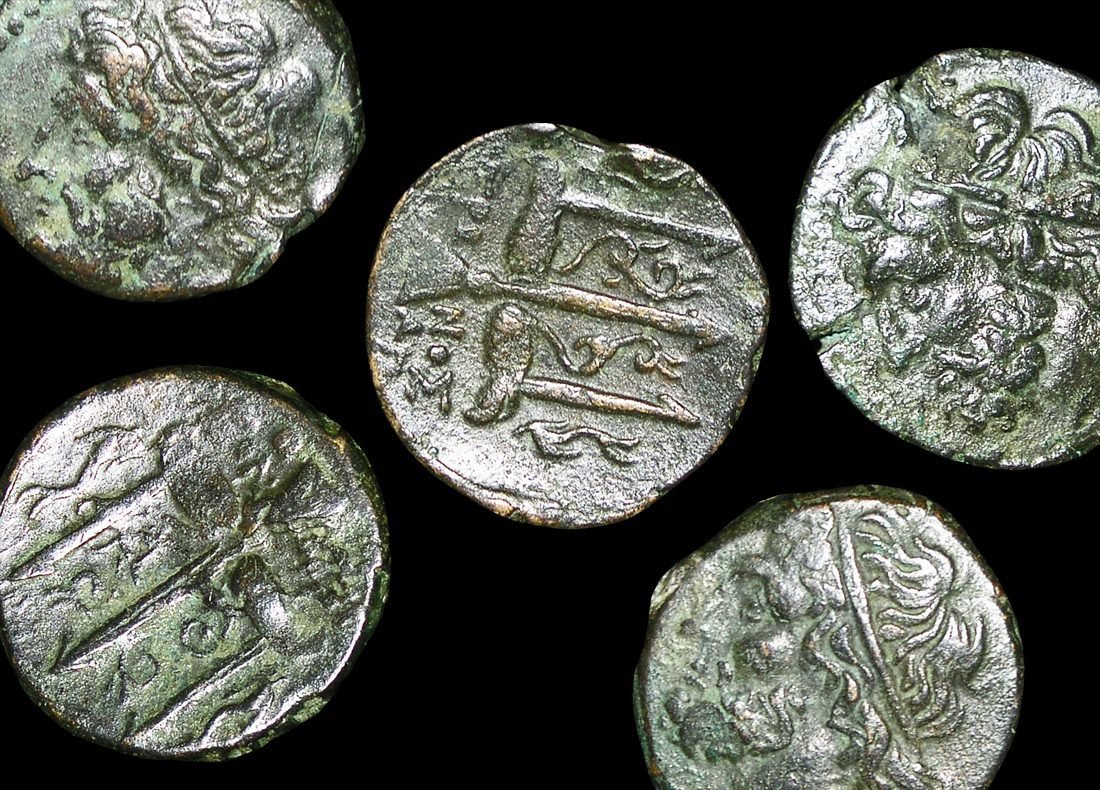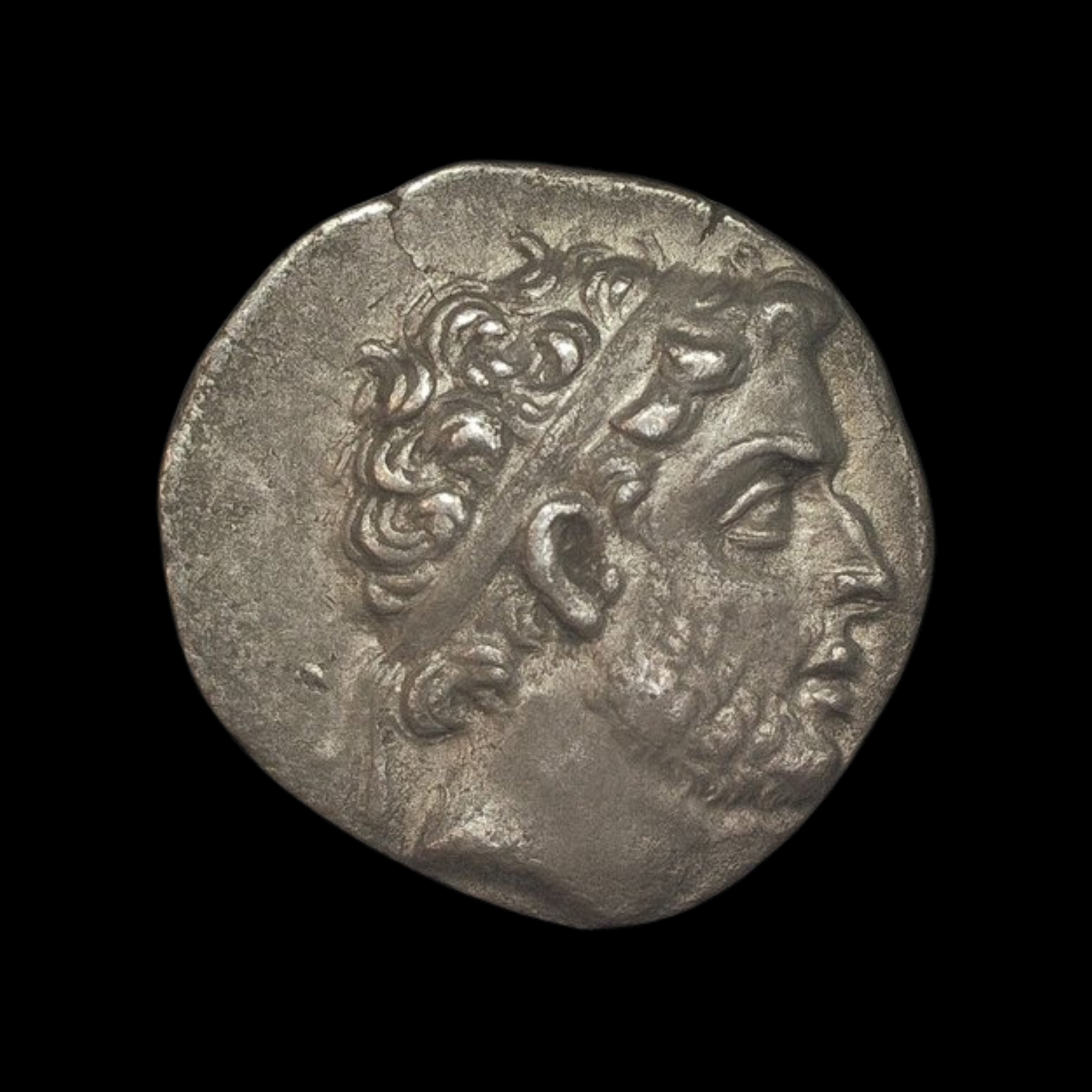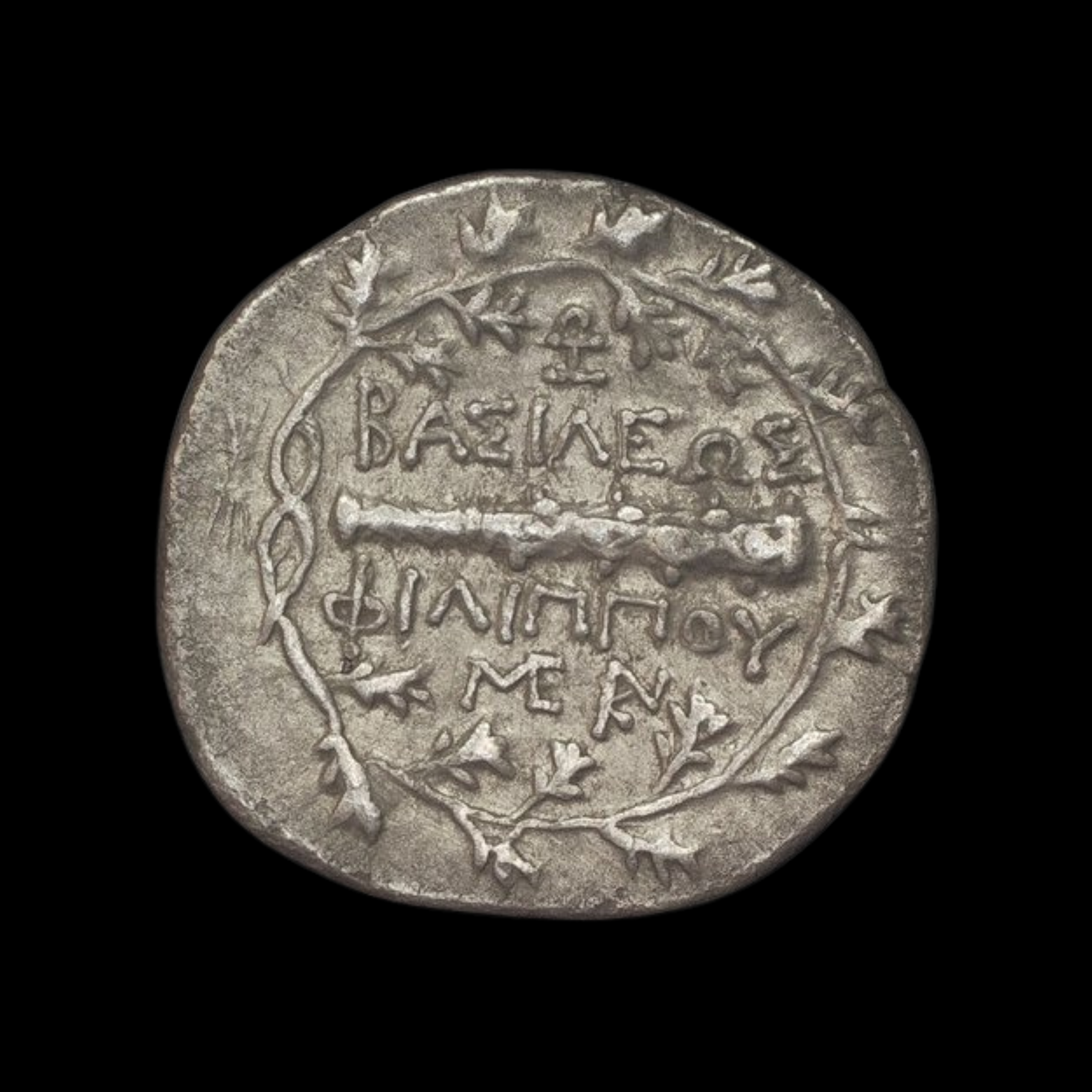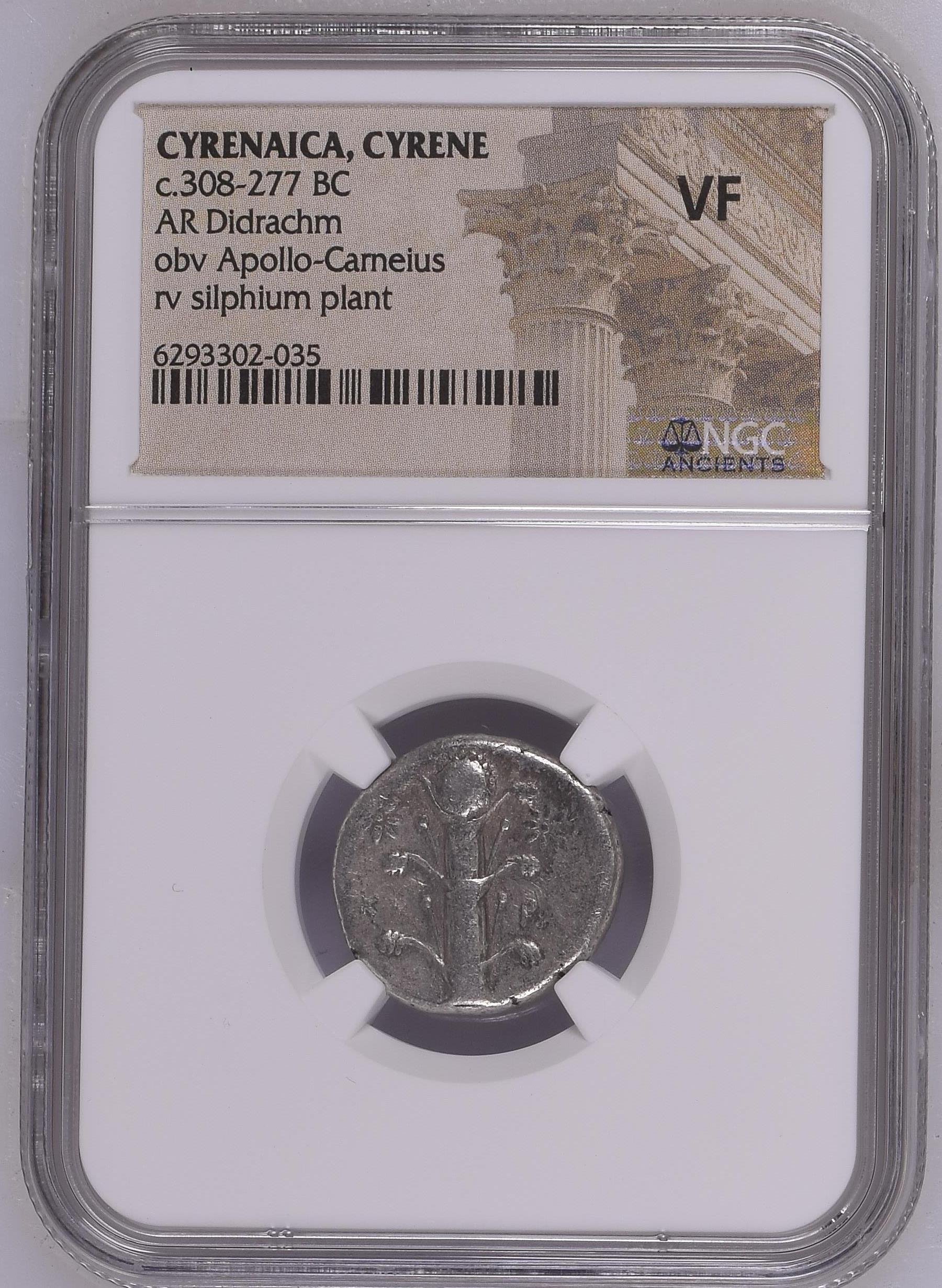 Image 1 of 2
Image 1 of 2

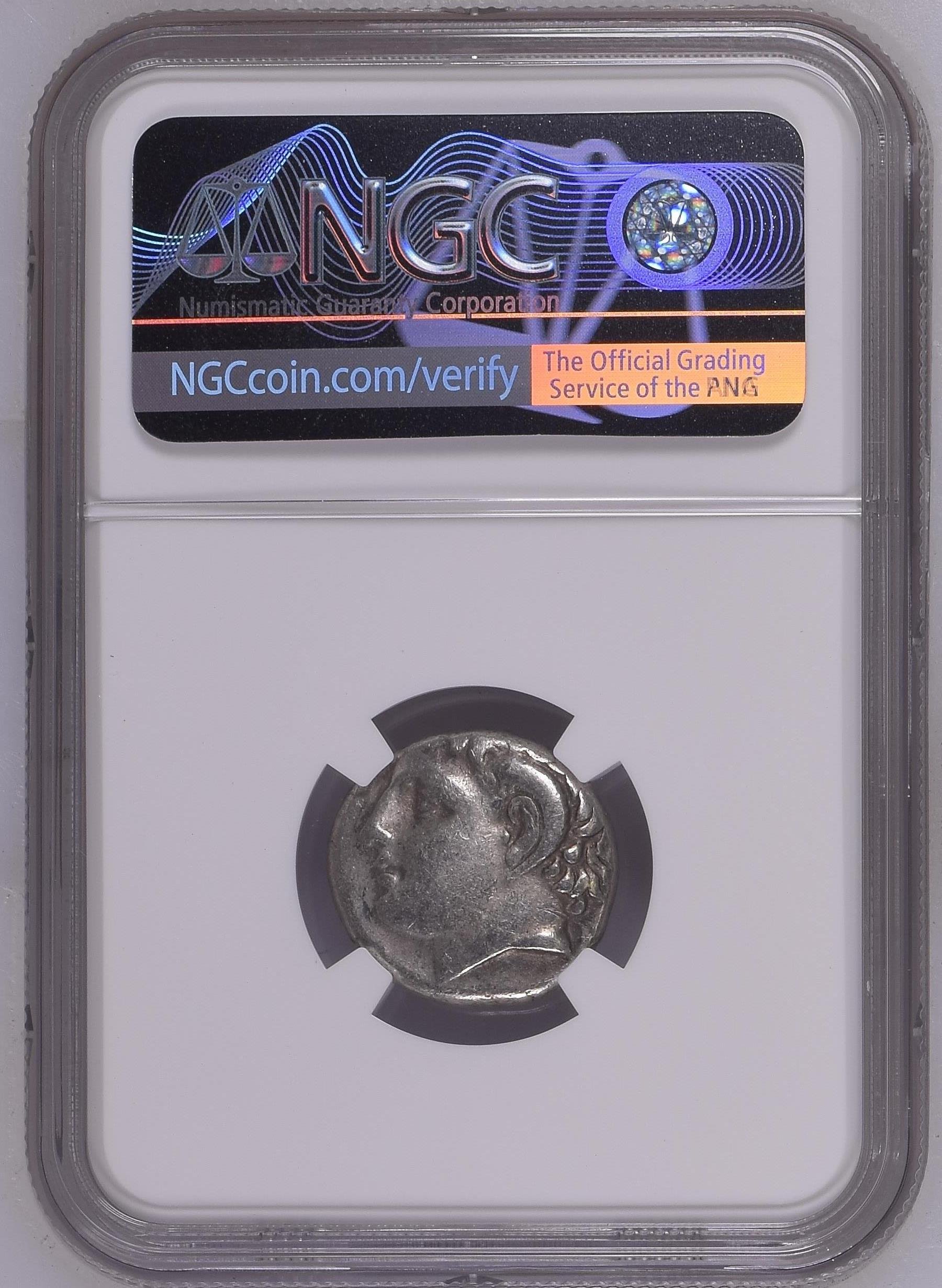 Image 2 of 2
Image 2 of 2



Silver Didrachm from Cyrene (about 2,300 years ago)
This silver didrachm comes from the ancient Greek city of Cyrene in North Africa (present-day Libya). Minted between 308-277 BCE during the early Ptolemaic period, this coin exemplifies the distinctive numismatic tradition of one of antiquity's wealthiest trade centers. The imagery on both sides connects to the religious practices and economic foundations that made Cyrene famous throughout the Mediterranean world.
Coin Description:
Front side: The obverse features Apollo-Carneius, depicted with characteristic curled hair and wreath adornment. This specific representation of Apollo was particularly venerated in Cyrene.
Back side: The reverse showcases the silphium plant, displaying its distinctive stem, flowering head, and seed pods. This plant was Cyrene's exclusive export and the foundation of its economy.
Technical Details:
Silver composition (AR)
Didrachm denomination (equivalent to two drachms)
Weight: Approximately 7-8 grams
Size: Approximately 20-22mm diameter
NGC Grade: VF (Very Fine) - showing good preservation of details despite circulation wear
Date of minting: 308-277 BCE (during the transition to Ptolemaic control)
Historical Significance: This coin circulated during a crucial period in ancient Mediterranean history when the successor kingdoms to Alexander the Great were establishing control over former Greek colonies. Cyrene, founded by Greeks from Thera (modern Santorini) in the 7th century BCE, had developed into a prosperous center of trade and culture by the time this coin was minted. The city's extraordinary wealth derived almost entirely from its monopoly on silphium, a now-extinct plant that grew only in this region of North Africa. The plant was so valuable for its medicinal and culinary uses that it was worth its weight in precious metals. The didrachm represented substantial purchasing power—roughly equivalent to two days' skilled labor—and would have facilitated trade throughout the eastern Mediterranean. The continued use of traditional Greek imagery under Ptolemaic rule demonstrates how the city maintained its cultural identity even as political control changed hands.
This silver didrachm comes from the ancient Greek city of Cyrene in North Africa (present-day Libya). Minted between 308-277 BCE during the early Ptolemaic period, this coin exemplifies the distinctive numismatic tradition of one of antiquity's wealthiest trade centers. The imagery on both sides connects to the religious practices and economic foundations that made Cyrene famous throughout the Mediterranean world.
Coin Description:
Front side: The obverse features Apollo-Carneius, depicted with characteristic curled hair and wreath adornment. This specific representation of Apollo was particularly venerated in Cyrene.
Back side: The reverse showcases the silphium plant, displaying its distinctive stem, flowering head, and seed pods. This plant was Cyrene's exclusive export and the foundation of its economy.
Technical Details:
Silver composition (AR)
Didrachm denomination (equivalent to two drachms)
Weight: Approximately 7-8 grams
Size: Approximately 20-22mm diameter
NGC Grade: VF (Very Fine) - showing good preservation of details despite circulation wear
Date of minting: 308-277 BCE (during the transition to Ptolemaic control)
Historical Significance: This coin circulated during a crucial period in ancient Mediterranean history when the successor kingdoms to Alexander the Great were establishing control over former Greek colonies. Cyrene, founded by Greeks from Thera (modern Santorini) in the 7th century BCE, had developed into a prosperous center of trade and culture by the time this coin was minted. The city's extraordinary wealth derived almost entirely from its monopoly on silphium, a now-extinct plant that grew only in this region of North Africa. The plant was so valuable for its medicinal and culinary uses that it was worth its weight in precious metals. The didrachm represented substantial purchasing power—roughly equivalent to two days' skilled labor—and would have facilitated trade throughout the eastern Mediterranean. The continued use of traditional Greek imagery under Ptolemaic rule demonstrates how the city maintained its cultural identity even as political control changed hands.
This silver didrachm comes from the ancient Greek city of Cyrene in North Africa (present-day Libya). Minted between 308-277 BCE during the early Ptolemaic period, this coin exemplifies the distinctive numismatic tradition of one of antiquity's wealthiest trade centers. The imagery on both sides connects to the religious practices and economic foundations that made Cyrene famous throughout the Mediterranean world.
Coin Description:
Front side: The obverse features Apollo-Carneius, depicted with characteristic curled hair and wreath adornment. This specific representation of Apollo was particularly venerated in Cyrene.
Back side: The reverse showcases the silphium plant, displaying its distinctive stem, flowering head, and seed pods. This plant was Cyrene's exclusive export and the foundation of its economy.
Technical Details:
Silver composition (AR)
Didrachm denomination (equivalent to two drachms)
Weight: Approximately 7-8 grams
Size: Approximately 20-22mm diameter
NGC Grade: VF (Very Fine) - showing good preservation of details despite circulation wear
Date of minting: 308-277 BCE (during the transition to Ptolemaic control)
Historical Significance: This coin circulated during a crucial period in ancient Mediterranean history when the successor kingdoms to Alexander the Great were establishing control over former Greek colonies. Cyrene, founded by Greeks from Thera (modern Santorini) in the 7th century BCE, had developed into a prosperous center of trade and culture by the time this coin was minted. The city's extraordinary wealth derived almost entirely from its monopoly on silphium, a now-extinct plant that grew only in this region of North Africa. The plant was so valuable for its medicinal and culinary uses that it was worth its weight in precious metals. The didrachm represented substantial purchasing power—roughly equivalent to two days' skilled labor—and would have facilitated trade throughout the eastern Mediterranean. The continued use of traditional Greek imagery under Ptolemaic rule demonstrates how the city maintained its cultural identity even as political control changed hands.





